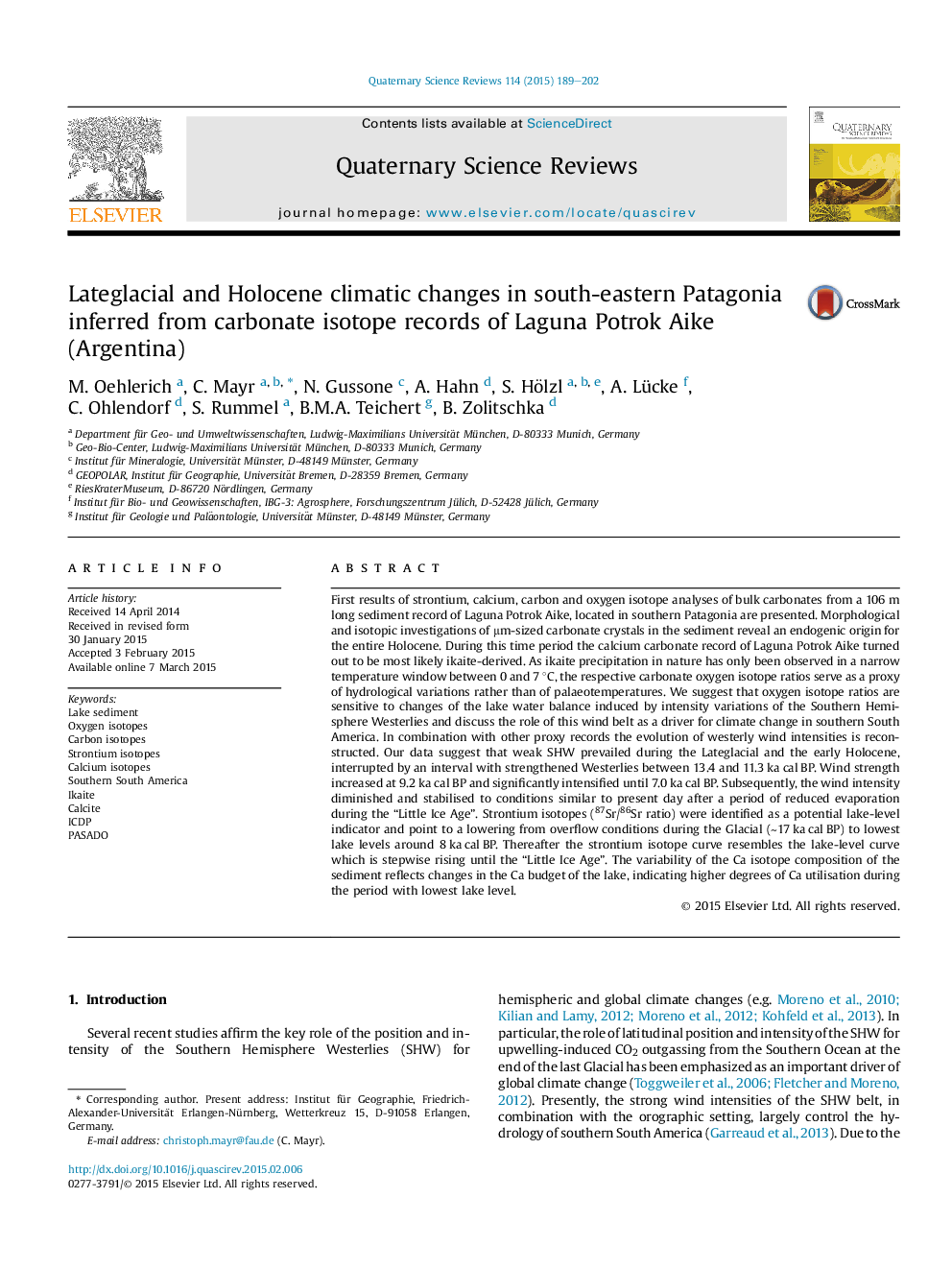| کد مقاله | کد نشریه | سال انتشار | مقاله انگلیسی | نسخه تمام متن |
|---|---|---|---|---|
| 4736392 | 1640820 | 2015 | 14 صفحه PDF | دانلود رایگان |

• A sediment record from a maar lake in eastern Patagonia was investigated.
• Oxygen, carbon, calcium, and strontium isotopes of bulk carbonates were analysed.
• Carbonates originated from ikaite during the Holocene.
• Oxygen isotopes confirmed a drought phase 9.2 to 7.0 kiloyears ago.
• Strontium isotopes reflect hydrological changes during the last 16,000 years.
First results of strontium, calcium, carbon and oxygen isotope analyses of bulk carbonates from a 106 m long sediment record of Laguna Potrok Aike, located in southern Patagonia are presented. Morphological and isotopic investigations of μm-sized carbonate crystals in the sediment reveal an endogenic origin for the entire Holocene. During this time period the calcium carbonate record of Laguna Potrok Aike turned out to be most likely ikaite-derived. As ikaite precipitation in nature has only been observed in a narrow temperature window between 0 and 7 °C, the respective carbonate oxygen isotope ratios serve as a proxy of hydrological variations rather than of palaeotemperatures. We suggest that oxygen isotope ratios are sensitive to changes of the lake water balance induced by intensity variations of the Southern Hemisphere Westerlies and discuss the role of this wind belt as a driver for climate change in southern South America. In combination with other proxy records the evolution of westerly wind intensities is reconstructed. Our data suggest that weak SHW prevailed during the Lateglacial and the early Holocene, interrupted by an interval with strengthened Westerlies between 13.4 and 11.3 ka cal BP. Wind strength increased at 9.2 ka cal BP and significantly intensified until 7.0 ka cal BP. Subsequently, the wind intensity diminished and stabilised to conditions similar to present day after a period of reduced evaporation during the “Little Ice Age”. Strontium isotopes (87Sr/86Sr ratio) were identified as a potential lake-level indicator and point to a lowering from overflow conditions during the Glacial (∼17 ka cal BP) to lowest lake levels around 8 ka cal BP. Thereafter the strontium isotope curve resembles the lake-level curve which is stepwise rising until the “Little Ice Age”. The variability of the Ca isotope composition of the sediment reflects changes in the Ca budget of the lake, indicating higher degrees of Ca utilisation during the period with lowest lake level.
Journal: Quaternary Science Reviews - Volume 114, 15 April 2015, Pages 189–202